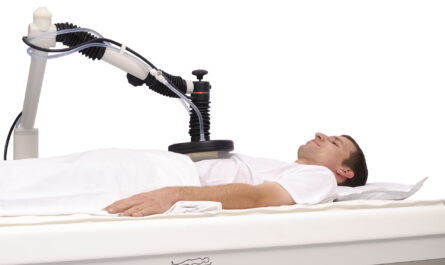Dupuytren’s disease, also known as Dupuytren’s contracture, is a common fibroproliferative disease of the hand that affects millions of people globally. This tendon condition causes a progressive contraction of the fingers toward the palm making it impossible to straighten one or more fingers fully. In this article, we explore the global prevalence, risk factors, complications and treatments of this debilitating hand condition.
Risk Factors for Developing Dupuytren’s Disease
Genetics
Dupuytren’s disease tends to run in families, suggesting a strong genetic component. People with a family history of the condition are at higher risk of developing it themselves. Studies show that around 30-40% of patients with Dupuytren’s disease have a positive family history of the condition.
Age and Gender
The risk of developing Dupuytren’s disease increases with age. It typically affects middle-aged to elderly men, with onset usually between 50-70 years of age. Men are four to six times more likely to develop Dupuytren’s disease compared to women. However, the condition is also increasingly being seen in younger patients and women.
Medical Conditions
Patients with certain medical conditions like diabetes, epilepsy, heart disease and previous hand injuries are more likely to develop Dupuytren’s disease. Approximately 30% of Dupuytren’s disease patients have diabetes, indicating it as a significant risk factor.
Lifestyle Factors
Manual laborers who perform repeated trauma to the hands through their occupations have a higher prevalence of Dupuytren’s disease. Other proposed risk factors include smoking, alcohol consumption and northern European ancestry.
Global Prevalence of Dupuytren’s Disease
Europe and Scandinavia
Dupuytren’s disease is most common in populations of Northern European descent. Scandinavian countries like Norway, Iceland, Denmark, Finland and Sweden have the highest rates worldwide, with an estimated lifetime risk of over 30% in men aged 50 years and older from these regions. Other European countries like Germany, UK, France and the Netherlands also report high rates.
North America
In the United States, around 4-6% of the Caucasian population is estimated to be affected by Dupuytren’s disease. Alaska Native and Native American populations also have elevated rates. Canada reports prevalence similar to northern US states.
Asia and Pacific Islands
Although the condition was previously considered rare in Asia, studies now indicate Dupuytren’s disease affects 1-2% of the Chinese population. It is also increasingly being diagnosed among indigenous populations in Australia and Pacific islands like Hawaii.
Africa and Latin America
Reported prevalence in sub-Saharan Africa and Latin American countries is considered low at less than 1%. However, rates among indigenous and mixed-race populations suggest an under-diagnosis and limited data availability from these regions.
Complications of Advanced Dupuytren’s Disease
Loss of Hand Function
As contractures in the fingers progress, patients may lose the ability to fully extend their fingers, making simple tasks like gripping, grasping and pinching difficult or impossible without treatment. Severe cases can render the hand virtually unusable.
Joint Stiffness and Deformity
Advanced Dupuytren’s disease frequently causes deformities of the small joints in the fingers (PIP & DIP joints). Once the joints become fixed in a bent position, they commonly develop arthritis and permanent stiffness over time without treatment.
Social Impact
The physical impairments from Dupuytren’s disease significantly impact quality of life, causing embarrassment, dependency on others for assistance, difficulty in self-care and loss of independence in old age. It can also negatively impact vocational capacity and leisure activities.
Treatment Options for Dupuytren’s Disease
Nonsurgical Options
In early or mild cases, nonsurgical approaches like finger splinting, injecting enzymes or steroids into the contracture and physiotherapy may help stretch affected joints temporarily. However, these options are rarely effective in halting progression long term.
Surgical Release
Surgery to cut or release the contracted fascia remains the most effective treatment for moderate to severe contractures that limit hand function. Procedures include fasciectomy (closed or open), fasciotomy and dermofasciectomy. Recurrence after surgery is common, often requiring multiple procedures over a lifetime.
Newer Minimal Access Techniques
Novel surgical approaches like percutaneous needle fasciotomies and collagenase clostridium histolyticum injections aim to minimize scarring and speeds recovery compared to traditional surgery. However, long term outcomes and risks of recurrence remain to be determined for these newer options.
Advancing Global Awareness and Research
As prevalence data emerges worldwide, there is a need to advance awareness about Dupuytren’s disease globally. Dedicated international organizations like the Dupuytren’s Network strive to educate healthcare professionals and coordinate international research efforts to better understand, diagnose and improve treatments for this under-recognized condition impacting millions worldwide.
In conclusion, this article has highlighted Dupuytren’s disease as a globally prevalent fibroproliferative disorder affecting populations worldwide, with higher rates reported in Northern European descended communities. Genetic, medical and lifestyle risk factors influence individual susceptibility. While surgery remains the mainstay of treatment for advanced cases, ongoing research aims to develop better nonsurgical and minimal access procedures. Growing international awareness and collaboration will help advance care for patients affected by this debilitating hand condition globally.



